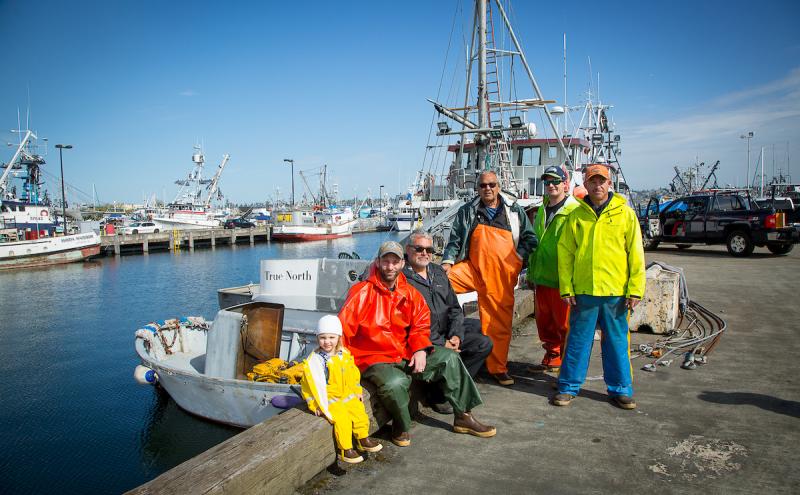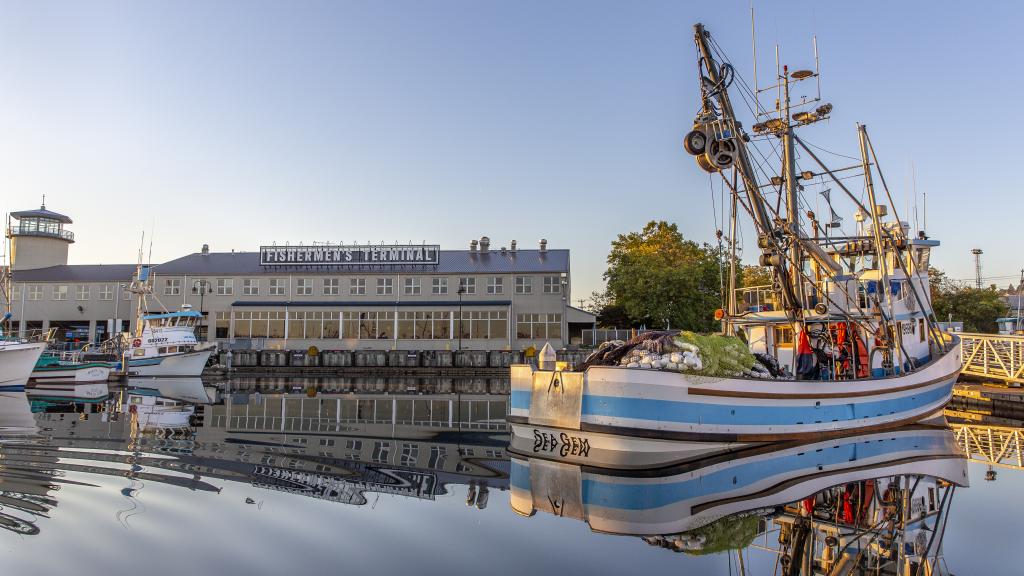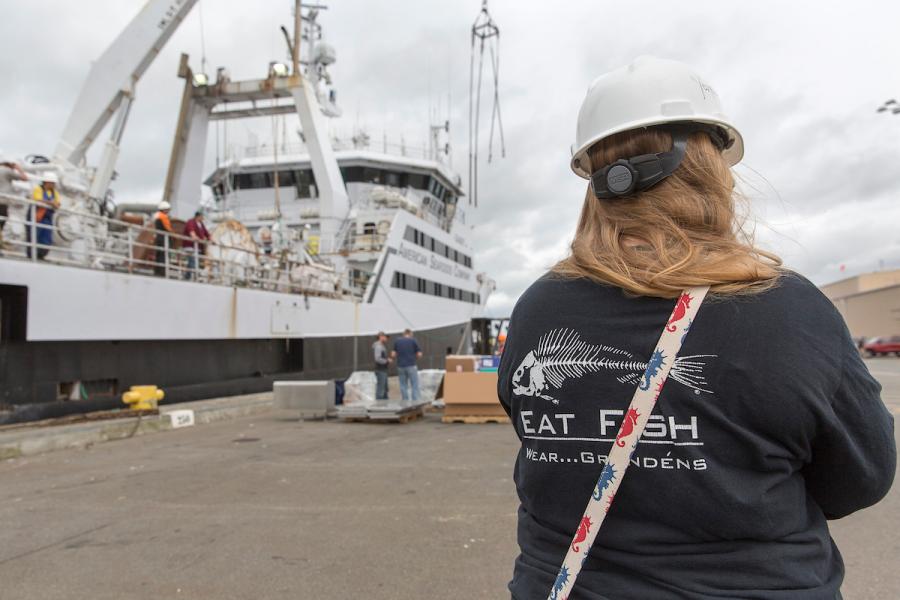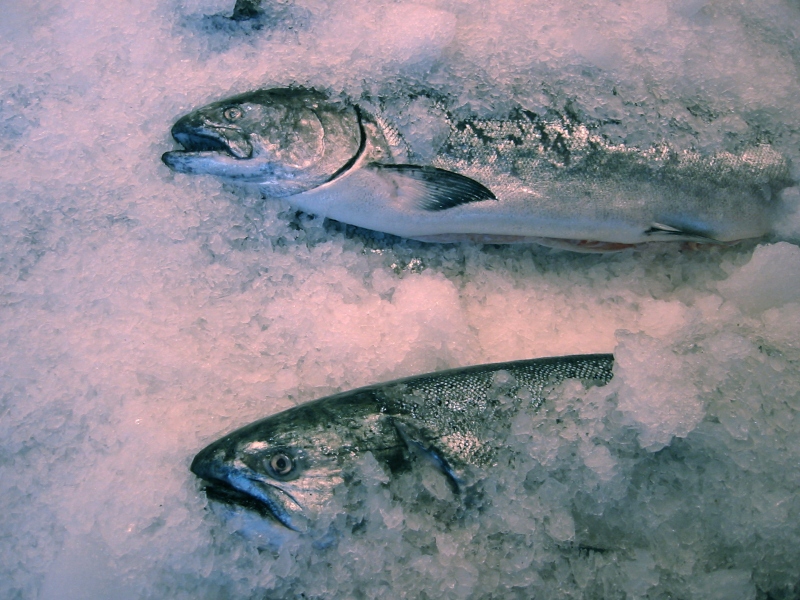
By Tosca Pinder, President, Seattle Propeller Club
October is National Seafood Month, and a perfect time to celebrate our local fishing industry. Just as important, it’s a terrific month to really discover the incredible value of nutritious, sustainable, and healthy seafood.
To highlight the local fishing industry and promote great eating with seafood, the Seattle Propeller Club, the Port of Seattle, and our fishing industry partners join together for Seafood 101, which celebrates the journey from sea to market to table.
Let’s start that journey.
If you enjoy incredibly fresh, wild-caught Alaskan seafood at your family’s dinner table or at your favorite restaurant, you can thank the fishermen who are part of the North Pacific Fishing Fleet based in Seattle.
Feeding the region and the economy
For more than 100 years, commercial fishing has been a cornerstone of our regional economy and today, our fishing and seafood industries have never been stronger — or more important to the region. Did you know that commercial fishing vessels based at the Port of Seattle supply 13% of the total U.S. commercial fishing harvest by tonnage? And that also means more than 16,000 high-paying jobs here at our fishing companies, shipyards, and suppliers.
The Ballard/Interbay/Lake Union area is home to hundreds of maritime and fishing companies, including gillnetters, purse seiners, and halibut schooners at Fishermen’s Terminal; the large harvesters and processors at Terminal 91; a dozen major seafood companies; fuel providers; 10 shipyards; supply companies; and other marine services. Many of these businesses have operated for more than 100 years!
Of the 300 commercial fishing vessels that used Port of Seattle facilities in 2017, 226 of these vessels actively fished in Alaskan waters to catch pollock, Alaskan king crab, groundfish, salmon, and other seafood. Alaska is the top U.S. seafood producer, producing 5.7 billion pounds in 2017/2018, two-thirds of the nation’s wild seafood harvest in a typical year!

Port of Seattle moorage customers harvested 1.3 metric tons of seafood in the North Pacific Fisheries, with equivalent gross earnings of between $259.1 million and $455 million, adjusted for inflation.
-
Learn more about the fishing industry and check out a self-guided Fishermen’s Terminal Walking Tour
Prioritizing sustainability
And the fishing industry and its government partners are passionate about sustainability. The United States is a recognized global leader in sustainable seafood. Marine fisheries in the United States comply with science-based fishery management plans developed by regional fishery management councils through an open and public process, relying upon the best scientific information available.
By law, U.S. seafood must be caught according to fishery management plans that consider the social and economic outcomes for fishing communities; prevent overfishing; rebuild depleted stocks; minimize bycatch and interactions with protected species; and identify and conserve essential fish habitat.
- Learn about the fishing industry’s sustainable practices at NOAA’s Fishwatch.gov
What does the combination of more than 100 years of fishing fleet experience and a passion for sustainability mean for your family? You can serve the freshest, safest and most nutritious seafood from the most sustainable fisheries around!

Healthy and delicious
But why eat more seafood?
According to the Seafood Nutrition Partnership, seafood includes vital nutrients needed for health and wellness at all ages, including omega-3s, iron, B and D vitamins, and protein. Fish and shellfish supply the nutrients, vitamins and omega 3s essential for strong bones, brain development, and healthy heart and immune system. Eating seafood at least twice a week reduces the risk of death from any health-related cause by 17%. The fats found naturally in seafood, omega-3s EPA and DHA, are essential to our health.
Seafood 101
- Many seafood dishes can be easily prepared in 15 minutes or less! Check out these tasty recipes!
- When buying seafood, here are a few tips from NOAA Fishwatch
Buy seafood from knowledgeable, reputable dealers — those you trust with a known record of proper handling practices — and keep these tips in mind:
- If a seafood counter or freezer case smells fishy, shop somewhere else. Fresh, quality seafood should smell like the ocean, not sour or fishy
- Look for seafood that is properly iced and refrigerated or frozen

When buying seafood from your local seafood counter, follow these guidelines:
- Whole fish or fish fillets should generally have firm, shiny flesh. Fish fillets that have been previously frozen might not look as shiny, due to the freezing process, but they are still great to eat
- Whole fish should have bright, clear, full eyes that are often protruding and gills that are bright red or pink. As the fish loses freshness, the eyes become cloudy and sunken
- Check to make certain that there is no darkening or brown or yellowish discoloration around the edges of fish fillets and steaks, especially if the edges appear dry or mushy
- If you’re still uncertain about how fresh the fish is, ask to have it rinsed under cold water and then smell it. Fresh fish should not smell fishy or like ammonia
- Frozen seafood is also an excellent choice, as fresh catch is often immediately processed and frozen after being caught
Join the celebration of the journey from Sea to Market to Table during National Seafood Month!
There’s never been a better time to see why our maritime industry and fishing industry matter to our region and the world. The success of the industry is the story of Seattle — we put the Sea in Seattle!
About the Author and the Seattle Propeller Club
Tosca Pinder is the Seattle Propeller Club President and when she is not volunteering for the Club, she is an Associate Vice President at Newfront (Formerly ABD Insurance), a risk management and benefits solution brokerage. Tosca and the team at Newfront specialize in partnering with maritime businesses to provide risk management advisory and creative solutions to clients’ insurance needs. Newfront proudly represents all sectors of the maritime industry, including many of the commercial fishing vessels that call Seattle their home port.
The Seattle Propeller Club is the largest and most diverse maritime business organization in Seattle. The
Club promotes maritime commerce in the Puget Sound region and holds monthly networking events, raises funds to support maritime nonprofit organizations, and supports initiatives to enhance the vitality of the industry. The Maritime Festival, Seattle Maritime Matters, and Seafood 101 campaigns are produced by the Seattle Propeller Club.
- Learn more at the Seattle Propeller Club website
Salmon photo credit: "King Salmon" by adactio is licensed under CC BY 2.0



